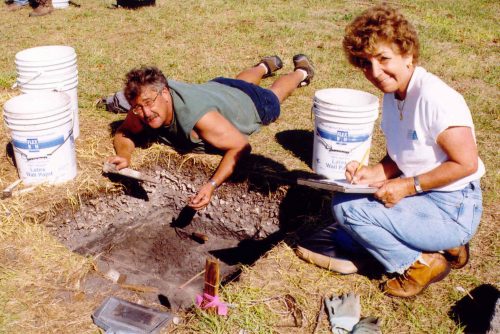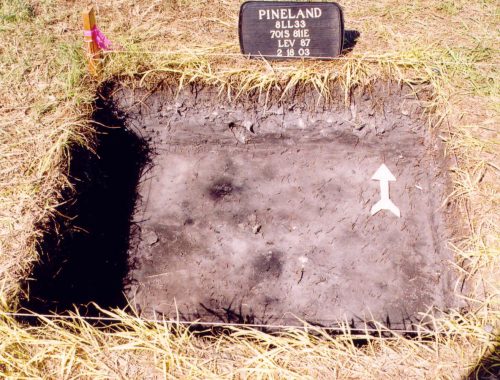The RRC staff and volunteers are beginning to breathe a sigh of relief after a record year of public visitation and near constant activity.

During June 2002-May 2003, 1,901 visitors toured the Pineland site. This included 24 tours to public, private, and home-school groups (775 students and teachers), 75 tours to other groups or to the general public (942 visitors), and 184 registered visitors who took the new self-guided tour based at the Tarpon Lodge. During this same period, more than 3,000 hours of volunteer time were logged.
The spring also witnessed quite a bit of archaeo- logical fieldwork. One highlight was a March excavation near the highest point of Useppa Island. With the permission of landowners Peter and Sally Bergsten and Bill and Sherry Welch, RRC volunteers under my direction opened several 1-x-1-meter test pits along the level summit of Calusa Ridge, not far below the sites of previous excavations by Florida Museum of Natural History teams. The initial goal of the excavations was to determine if there were any architectural features associated with 1850s- era Fort Casey, but when late 18th-century British ceramics began to appear in the sifters, the fieldwork expanded to include the possibility of an early Cuban fishing camp at this elevated location on the island. Artifact analysis is still ongoing.

Other spring fieldwork focused on Pineland, in the South Pasture excavations that we began in January. We now have a 5-x-1-meter trench open near the summit of a long sandy elevation called Surf Clam Ridge, and are gradually removing a layer of shell to expose a black sandy layer that may be a prehistoric occupation floor. Posthole traces are present just below this floor layer, and seem to be concentrated at the summit of the ridge. Samples of pottery found in the floor appear to fall within the Caloosahatchee I period (500 B.C.–A.D. 500), and sherds from the overlying shell layer may date to the earliest years of the Caloosahatchee IIA period (A.D. 500-800). A radiocarbon date on a quahog clamshell anvil fragment sealed within the black sand layer above the postholes fell within the range A.D. 480-560. The prehistoric occupation floor thus appears to date very close to the boundary between these two periods at A.D. 500, making it all the more important to obtain larger samples of pottery and other refuse. With persistence and a little luck, we hope to explore and document a 1500-year- old house-floor here over the next months.
This article was taken from the Friends of the Randell Research Center Newsletter Vol 2, No. 2. June 2003.